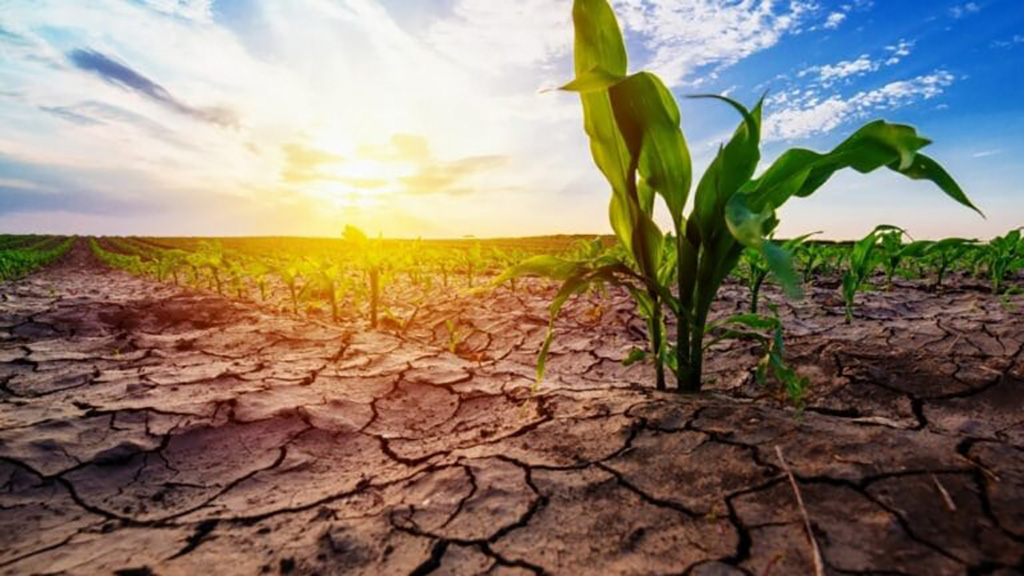Drought, a natural phenomenon characterized by prolonged periods of below-average precipitation, poses significant challenges to ecosystems, economies, and societies worldwide. ArborScape, a term coined to encapsulate the integrated approach to combating drought through sustainable land management and environmental conservation, stands as a beacon of hope amidst arid landscapes. In this comprehensive guide, we delve into the multifaceted strategies and innovative solutions aimed at mitigating the impact of drought and fostering resilience in the face of water scarcity to get ArborScape.
- Introduction
A. Definition of drought
Drought, often defined as a deficiency in precipitation over an extended period, manifests in various forms and intensities, exerting profound effects on water availability and ecosystem dynamics.
B. Importance of addressing drought
The imperative to address drought stems from its far-reaching consequences, encompassing environmental degradation, agricultural losses, and socio-economic upheaval.
C. Overview of the article
This article navigates the landscape of drought management, from understanding the intricacies of drought to exploring diverse strategies and technological innovations aimed at mitigating its impact. Through collaborative efforts and innovative solutions, the path towards sustainable water management and drought resilience emerges.
II. Understanding Drought
A. Causes of drought
Droughts can arise from a confluence of meteorological, hydrological, and human-induced factors, including irregular weather patterns, depleted groundwater reserves, and unsustainable agricultural practices.
- Meteorological factors
Droughts may result from anomalies in precipitation patterns, such as prolonged periods of below-average rainfall or erratic weather phenomena like El Niño and La Niña.
- Hydrological factors
Declining surface water and groundwater levels contribute to hydrological droughts, where water availability diminishes due to decreased streamflow and depleted aquifers.
- Agricultural practices
Unsustainable agricultural practices, such as excessive water extraction and land degradation, exacerbate drought conditions by depleting soil moisture and disrupting natural hydrological cycles.
B. Types of drought
Droughts manifest in various forms, each with distinct characteristics and implications for ecosystems, agriculture, and water resources.
- Meteorological drought
Meteorological droughts occur when precipitation falls below the long-term average, leading to deficits in soil moisture and surface water availability.
- Agricultural drought
Characterized by insufficient soil moisture for crop growth, agricultural droughts pose significant challenges to food security and rural livelihoods, particularly in rain-fed agricultural regions.
- Hydrological drought
Hydrological droughts manifest as deficits in surface water and groundwater resources, impacting water supply systems, ecosystems, and human activities reliant on water resources.
C. Effects of drought
Droughts exert far-reaching effects on ecosystems, economies, and communities, amplifying vulnerabilities and exacerbating socio-economic disparities.
- Environmental impact
Droughts contribute to environmental degradation, leading to habitat loss, reduced biodiversity, and increased susceptibility to wildfires and desertification.
- Economic impact
The economic repercussions of droughts extend across various sectors, including agriculture, tourism, and industry, resulting in crop failures, revenue losses, and increased food prices.
- Social impact
Droughts exacerbate social inequalities and vulnerabilities, disproportionately affecting marginalized communities and exacerbating food insecurity, water scarcity, and migration pressures.
III. Strategies for Mitigating Drought
A. Water Conservation Techniques
Efficient irrigation methods, rainwater harvesting, and greywater recycling offer promising avenues for conserving water resources and reducing demand pressures during periods of drought.
- Efficient irrigation methods
Drip irrigation, micro-sprinklers, and soil moisture sensors enable precise water application, minimizing water losses and maximizing crop water-use efficiency.
- Rainwater harvesting
Capturing and storing rainwater for irrigation, household use, and groundwater recharge mitigate the impacts of drought by supplementing water supplies and reducing reliance on municipal water sources.
- Greywater recycling
Treating and reusing greywater from households and commercial establishments reduces freshwater consumption and alleviates pressure on water resources, particularly in water-stressed regions.
B. Sustainable Land Management
Afforestation, soil conservation practices, and agroforestry play pivotal roles in enhancing ecosystem resilience and mitigating the impacts of drought on soil fertility and water availability.
- Afforestation and reforestation
Planting trees and restoring degraded landscapes enhance soil moisture retention, mitigate erosion, and promote biodiversity, thereby bolstering ecosystem resilience to drought.
- Soil conservation practices
Implementing soil conservation measures, such as contour plowing, cover cropping, and terracing, minimizes soil erosion, improves soil structure, and enhances water infiltration rates.
- Agroforestry
Integrating trees into agricultural landscapes through agroforestry systems enhances soil fertility, increases water infiltration, and provides additional sources of income and ecosystem services, fostering resilience to drought.
C. Policy and Governance Measures
Drought preparedness plans, legal frameworks for water management, and international cooperation initiatives facilitate coordinated responses to drought and promote equitable access to water resources.
- Drought preparedness plans
Developing comprehensive drought preparedness plans and early warning systems enables proactive responses to drought events, including water rationing, emergency assistance, and risk mitigation measures.
- Legal frameworks for water management
Establishing robust legal frameworks and regulatory mechanisms for water governance ensures equitable allocation of water resources, protects ecosystems, and safeguards against water-related conflicts during periods of drought.
- International cooperation initiatives
Fostering international cooperation and partnerships facilitates knowledge sharing, capacity building, and collective action to address transboundary water challenges and promote sustainable water management practices in drought-prone regions.
IV. Technological Innovations for Drought Management
Advanced weather forecasting, water-efficient technologies, and biotechnology solutions offer transformative tools for enhancing drought resilience and adaptive capacity in water-stressed environments.
A. Advanced Weather Forecasting
Leveraging remote sensing technologies, climate modeling, and early warning systems enhances the accuracy and lead time of drought predictions, enabling timely responses and proactive drought management strategies.
- Remote sensing technologies
Satellite-based remote sensing platforms provide valuable insights into vegetation health, soil moisture levels, and atmospheric conditions, enabling real-time monitoring and assessment of drought conditions across vast spatial scales.
- Climate modeling
Sophisticated climate models simulate future climate scenarios, allowing scientists and policymakers to anticipate long-term trends in drought frequency, intensity, and spatial distribution, thereby informing adaptation strategies and risk management measures.
- Early warning systems
Integrated early warning systems combine meteorological data, hydrological models, and socioeconomic indicators to forecast drought onset, duration, and severity, empowering decision-makers to implement timely interventions and mitigate the impacts of drought on vulnerable communities.
B. Water-efficient Technologies
Drip irrigation systems, desalination technologies, and water-efficient appliances optimize water use efficiency and reduce water losses, thereby conserving water resources and enhancing drought resilience in water-stressed regions.
- Drip irrigation systems
Drip irrigation delivers water directly to the root zone of plants, minimizing evaporation losses and optimizing water distribution, particularly in arid and semi-arid environments where water scarcity is prevalent.
- Desalination technologies
Desalination processes, such as reverse osmosis and distillation, convert seawater or brackish water into freshwater, expanding water supply options and reducing dependence on finite freshwater resources vulnerable to drought.
- Water-efficient appliances
High-efficiency toilets, low-flow showerheads, and water-saving faucets reduce household water consumption and alleviate pressure on municipal water supplies, contributing to water conservation efforts during periods of drought.
C. Biotechnology Solutions
Drought-resistant crop varieties, genetic modification for drought tolerance, and microbial solutions for soil health offer innovative approaches to enhancing agricultural productivity and resilience in drought-prone regions.
- Drought-resistant crop varieties
Breeding drought-resistant crop varieties with enhanced tolerance to water stress, disease resistance, and agronomic performance equips farmers with resilient crop options capable of withstanding drought conditions and sustaining yields in water-limited environments.
- Genetic modification for drought tolerance
Genetic engineering techniques enable the development of genetically modified crops with enhanced drought tolerance traits, such as improved water-use efficiency, root architecture, and stress-responsive mechanisms, thereby enhancing agricultural resilience to drought and climate variability.
- Microbial solutions for soil health
Harnessing the beneficial properties of soil microbes, such as mycorrhizal fungi and nitrogen-fixing bacteria, enhances soil fertility, nutrient cycling, and water retention capacity, thereby improving crop resilience to drought and mitigating soil degradation in agricultural systems.
V. Community Engagement and Education
Public awareness campaigns, community-led initiatives, and education and training programs empower individuals and communities to adopt sustainable water management practices and build resilience to drought.
A. Public Awareness Campaigns
Education on water conservation, community workshops and events, and media outreach programs raise awareness about the importance of water conservation and empower individuals to take action to mitigate drought impacts.
- Education on water conservation
Promoting water-saving behaviors and practices through educational campaigns and outreach initiatives fosters a culture of water conservation and instills stewardship values among individuals and communities, thereby reducing water demand and mitigating drought risks.
- Community workshops and events
Organizing community workshops, seminars, and public events on drought resilience and water-saving technologies facilitates knowledge sharing, skill building, and community engagement, fostering collective action and collaboration towards sustainable water management goals.
- Media outreach programs
Harnessing the power of mass media, social media platforms, and digital communication channels amplifies the reach and impact of drought awareness campaigns, enabling broader dissemination of information, mobilization of resources, and advocacy for policy change and public action on water conservation.
B. Community-led Initiatives
Community gardens and green spaces, neighborhood water-saving competitions, and local advocacy groups empower communities to take ownership of drought resilience efforts and create positive change at the grassroots level.
- Community gardens and green spaces
Establishing community gardens, urban green spaces, and rooftop gardens enhances local biodiversity, improves urban microclimates, and promotes sustainable land use practices, while also providing opportunities for community engagement, food production, and ecosystem services that contribute to drought resilience and community well-being.
- Neighborhood water-saving competitions
Organizing neighborhood water-saving competitions and initiatives encourages friendly competition among residents to reduce water consumption, adopt water-saving technologies, and implement innovative water conservation practices, fostering a sense of collective responsibility and community pride in achieving water efficiency goals.
- Local advocacy groups
Forming local advocacy groups, community-based organizations, and grassroots movements empowers residents to advocate for policy changes, infrastructure investments, and community-led initiatives that promote water conservation, sustainable land management, and drought resilience in their neighborhoods, cities, and regions.
C. Education and Training
Training programs for farmers, school curriculum on water conservation, and vocational training for water management careers equip individuals with the knowledge, skills, and tools needed to address drought challenges and build resilience in water-stressed environments.
- Training programs for farmers
Providing farmers with access to training programs, workshops, and extension services on drought-resistant crop management, water-saving irrigation techniques, and sustainable land management practices enhances agricultural productivity, resilience, and adaptive capacity in drought-prone regions, while also promoting sustainable livelihoods and rural development.
- School curriculum on water conservation
Integrating water conservation and environmental education into school curricula fosters environmental literacy, critical thinking skills, and sustainable behavior among students, empowering future generations to become informed and engaged stewards of water resources and champions of drought resilience in their communities and beyond.
- Vocational training for water management careers
Offering vocational training programs, internships, and apprenticeships in water resource management, hydrology, and environmental science prepares individuals for careers in water-related professions, such as water engineers, hydrologists, and watershed managers, while also addressing workforce development needs and capacity gaps in the water sector, particularly in regions vulnerable to drought and water scarcity.
In conclusion, solving the problem of drought requires a holistic and multifaceted approach that integrates scientific knowledge, technological innovation, policy reform, community engagement, and education. By embracing the principles of ArborScape – sustainable land management, environmental conservation, and water stewardship – we can cultivate resilience in the face of drought and build a more sustainable and water-secure future for generations to come.



